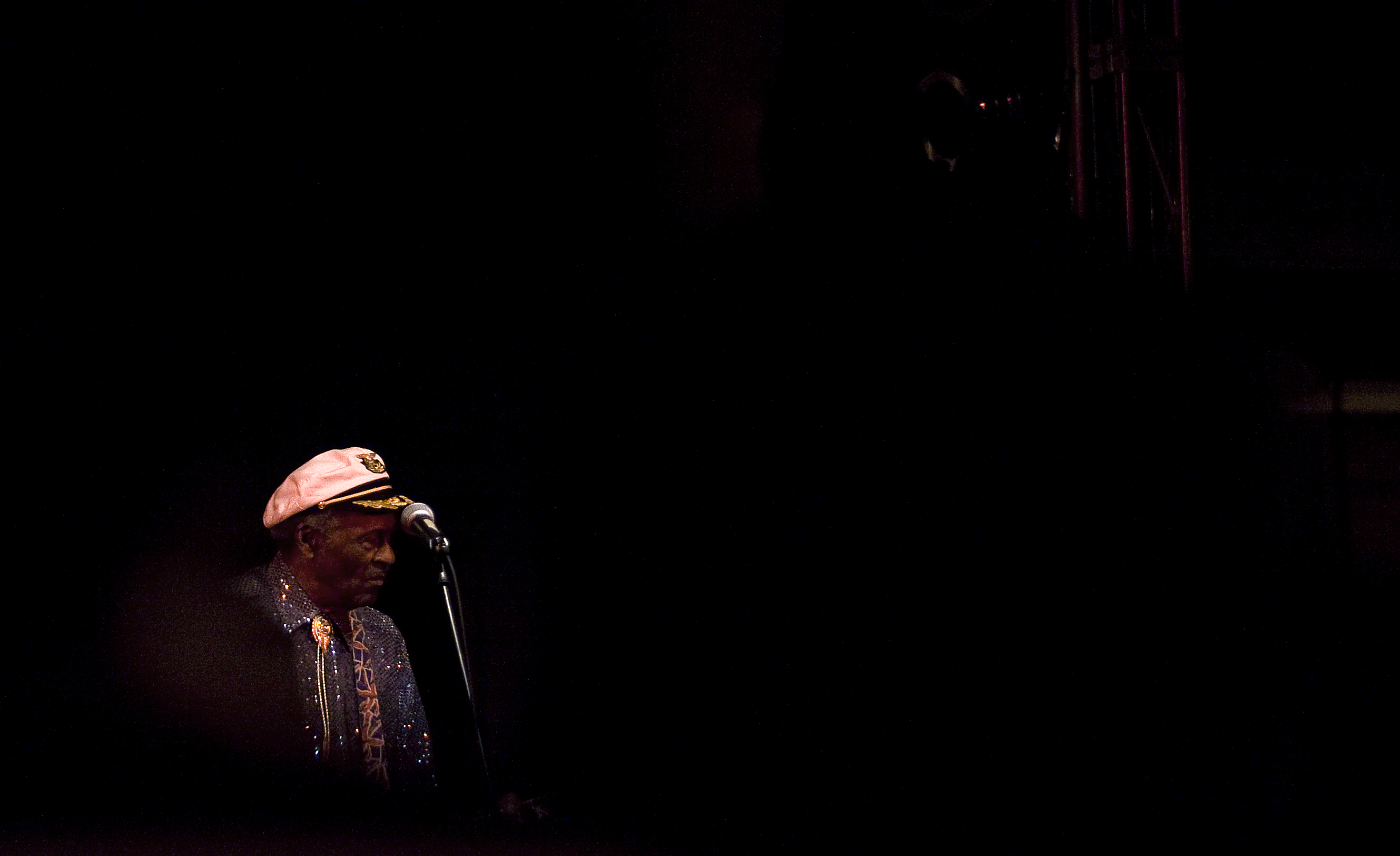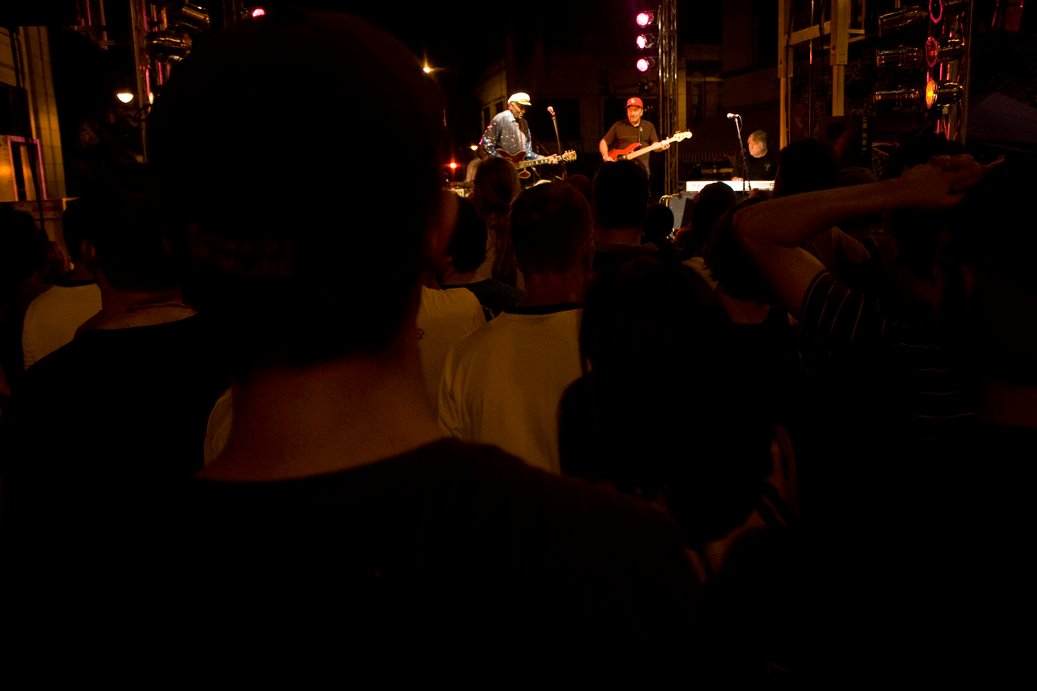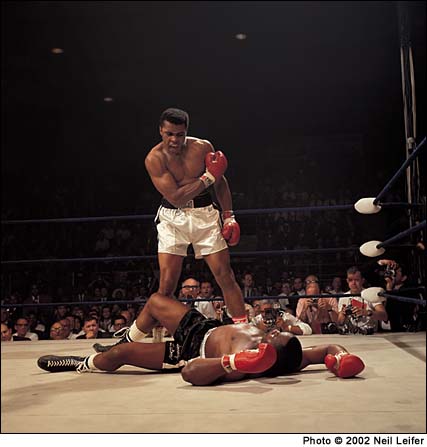We interrupt this slate of summer-happenings posts for yet another concert post. I actually don’t go to many concerts; I don’t think I’ve been to more than ten in my life. But tonight Chuck Berry, aka the King of Rock and Roll, the guy whose sound basically created the sound of the early Beatles, (especially) the early and middling Stones, and the Beach Boys (“Sweet Little Sixteen”/”Surfin’ USA”), among others, played a free concert in Columbia as part of the Summerfest series sponsored by the Blue Note.
I had heard that previous Summerfest concerts didn’t allow large cameras in to the blocked-off street area, so I left my Canon at home before heading down to Ninth St. I then realized this was a very stupid move, as there was in fact no restriction at all on cameras, and I should have been practicing the ‘better to ask forgiveness than permission’ principle of photo-j. Fortunately, I got to the venue three hours before Mr. Berry came on stage (thinking he would play one, not three hours after the gates opened), so I had plenty of time to zip back home and get my gear. This, by contrast, was a very good move. I would have been so frustrated to not have any of my own images of the show. But now I do!
And, wow, what a show. I mean, Chuck Berry is going to be 83 years old in October, and here he was playing guitar for a 45-minute outdoor set, singing his heart out, and duck walking during “Johnny B. Goode.” If I’m in half that shape when I’m 83, I’ll consider myself pretty lucky. He wasn’t perfect–some chords were off, he sang in odd keys for some songs, blah blah etc etc–but there’s something refreshing about the lack of polish. Rock isn’t supposed to be polished. I saw the Stones play a few years ago in Houston, and while it was great to see them live, the concert was part of an arena tour, more of a piece of choreography than anything else.
On a similar note, the show tonight was, as mentioned, free. There’s something wonderful, I think, about watching a performer sing and play purely for love of the game. The something wonderful becomes all the more “whoa”-inspiring when you stop to consider that the love of the game has been such a time-spanning affair. The affair looks like it’s going to continue for even longer–Berry’s son Charles Jr. plays guitar in the backup band. Aww.
The problem with bringing a camera to a concert, however, is that I’m just too darn short, and I have to Hail Mary all the time while trying to get decent images. It’s hard to Hail Mary with a telephoto lens, though, so I had to wait until the bodies in front of me kindofsortof moved out of the way–for a hair of a second–so I could get a frame in. BUT…all of the masses in front also provided instant negative space to work with, which ended up working better than I thought it would. Exhibit A:

There are a few more that follow- again, here I am stuck in one spot at the concert and unable to really vary the images (I think this point is much more clear if you look at the previous concert post and compare it to this one). Or is this just a by-product of concert photography? Either way, it’d probably be good to bring my flash next time I’m at a show (whenever that will be) and try to play around with that, for something new and exciting.




 John Rooney/AP
John Rooney/AP
